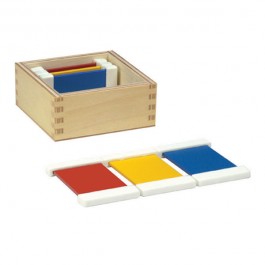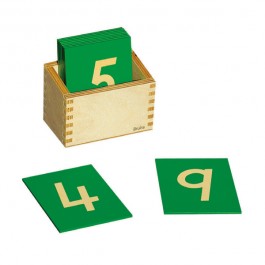The Three Period Lesson
The three period lesson is an integral part of the Montessori curriculum. This lesson was originated by Edouard Seguin during the mid-19th century in France. The three period lesson is used in the 3-6 classroom to help children learn a variety of vocabulary including color names, numeral names, sandpaper letter sounds, and sight words.
In simple terms, the three steps, or periods, are
-
Name (Introduce) “This is red.”
-
Identify (Practice) “Show me red.”
-
Remember (Master) “This is ______.”
First Period - Introduce
During this period, we introduce new vocabulary by naming the object or concept. “This is yellow.” “This is a cube.” “This says four.” Using a concrete object, the teacher offers the student an opportunity to manipulate the thing they are naming. A teacher could give the child a sandpaper letter. “This is /s/.” she says as she traces the letter and invites the child to do the same. Young children need clear, simple language to learn new words.
Color Box Geometric Solids Sandpaper Numerals


As you can see in the images above, Montessori materials isolate the one quality the child is learning by keeping all other characteristics identical.
Second Period - Practice
During the second period, children are asked to recognize the vocabulary. Start the second period with the last object named in the first period. The child has just heard this word and is more likely to be successful if it is immediately repeated.
Most children love this part and think of it as a fun game. “Hide the cone under the table.” “Put the /m/ on my head.” “Jump up and down with green.” “Point to North America on the globe.” During this period, we offer the child limited choices and ask them to identify the concrete object associated with the term.
If at any time during the second period the child is unsuccessful, move back to the first period. Name the object or concept again.
Spend time in the second period playing games with the children. Place items around the room for memory in retrieval. Spend an abundant amount of time allowing the child to play, explore, and recognize new language before expecting them to master it.
Third Period - Master
During this period, we are asking the child to remember the vocabulary. The teacher places two or three geometric solids on the table and asks the child to name them.
Children can retain information for a short period of time, but this isn’t internalizing the language. Don’t move on to this step too quickly. Take the time necessary in the second period to ensure that the child will be successful.
Instead of “What is this?” say, “This is ____.” Wait. If the child is unable to remember the term provide it for them. Move back to the first period.
When the child has mastered the terms, introduce new vocabulary. Continue to review these mastered words and concepts occasionally. We will discuss this topic more in a future blog post about spaced repetition.
